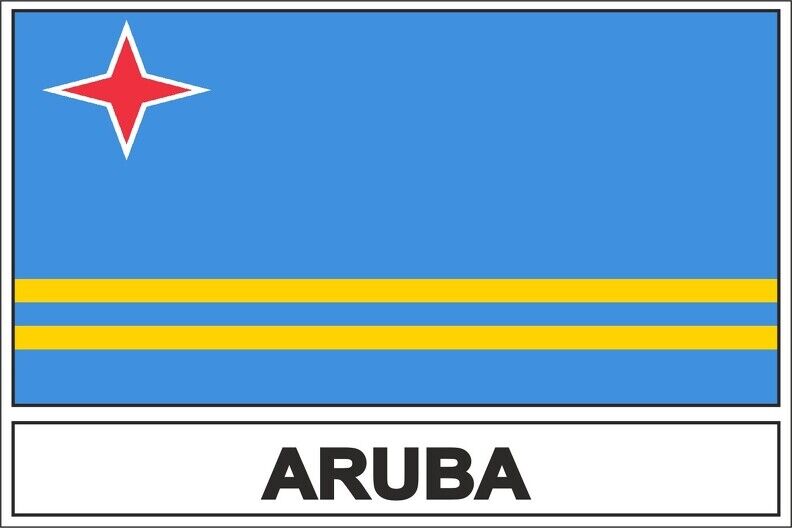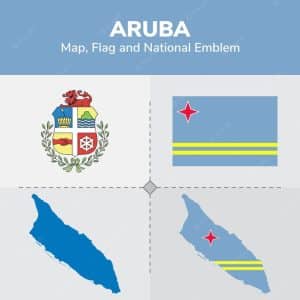Metro
Aruba Population, Official Language And More.

It closed again in 2012, and its future is uncertain. Tourism is currently the main pillar of Aruba’s economy, accounting for more than half of its GDP. Aruba attracts millions of visitors every year, who enjoy its white-sand beaches, rugged coastline, desert landscape, and cultural diversity. Aruba has a high standard of living, a stable political system, and a low crime rate. However, tourism also poses challenges for the island’s environment, infrastructure, and social cohesion.

Aruba map flag national emblem
THE POPULATION Aruba has a population of over 112,000 inhabitants of mixed ancestry, including Caquetio Indians, Africans, and Europeans. The majority of the population is Roman Catholic, followed by Protestant and other Christian denominations. The official languages are Dutch and Papiamento, a creole language derived from Spanish, Portuguese, Dutch, English, and African languages.
THE LANDMARKS Aruba has many landmarks that reflect its history and culture, such as: The California Lighthouse, a historic lighthouse that offers panoramic views of the island. The National Archaeological Museum Aruba, a museum that showcases the prehistoric and colonial heritage of the island. The Alto Vista Chapel, a small chapel that is considered the birthplace of Aruba’s Catholicism. The Butterfly Farm, a tropical garden that hosts hundreds of butterflies from around the world.
THE OFFICIAL LANGUAGE As mentioned above, the official languages are Dutch and Papiamento. Dutch is the language of administration, education, and law. Papiamento is the language of daily communication and cultural expression. Many Arubans also speak English and Spanish, due to tourism and trade.
THE CULTURE Aruba’s culture is a blend of influences from various ethnic groups, such as the indigenous Caiquetio, the Spanish, the Dutch, the African slaves, and the immigrants from other Caribbean islands, Latin America, Europe, and Asia. Aruba’s culture is characterized by its hospitality, diversity, creativity, and festivity. Some examples of Aruba’s cultural expressions are: The Carnival, a colorful celebration of music, dance, and costumes that lasts for several weeks before Lent. The Dande, a musical tradition that involves singing improvised verses to wish people a happy new year. The Aruba Aloe Museum and Factory, a place where visitors can learn about the history and production of aloe vera products, which are an important part of Aruba’s economy and health.
THE ECONOMIC STABILITY Aruba has a stable and prosperous economy, based mainly on tourism, which accounts for about 80% of its GDP. Other sectors that contribute to Aruba’s economy are financial services, oil refining, aloe vera exports, and renewable energy. Aruba has a high standard of living, with a GDP per capita of about $25,000 USD in 2019. Aruba also has a low unemployment rate, low inflation rate, and low public debt ratio.
THE GDP The Gross Domestic Product (GDP) of Aruba is the total value of all goods and services produced in the country in a given year. Aruba’s GDP was worth $3.13 billion US dollars in 2021, according to official data from the World Bank. Aruba’s GDP per capita, which is the GDP divided by the population, was about $29,342 USD in 2021. Aruba’s GDP growth rate, which measures how fast the economy is expanding or contracting, was 17.17% in 2021, recovering from a sharp decline of -18.59% in 2020 due to the COVID-19 pandemic. THE CURRENCY The official currency of Aruba is the Aruban Florin (AWG), also known as the Aruban Guilder. The Aruban Florin is divided into 100 cents and there are coins of 5, 10, 25, 50 cents, 1 florin, and 5 florins. The Aruban Florin is pegged to the United States Dollar (USD) at a fixed rate of USD$1 to AWG$1.79. The United States Dollar is also widely accepted in Aruba as a form of payment, especially in tourist areas.
THE FOOD Aruba’s food is influenced by its diverse cultural heritage, as well as its geography and climate. Some of the main ingredients in Aruba’s cuisine are seafood, such as fish, shrimp, lobster, and conch; meat, such as goat, chicken, and beef; rice, beans, plantains, corn, and cheese . Some of the typical dishes in Aruba are: Keshi yena, a casserole of cheese stuffed with meat, raisins, olives, and spices. Pastechi, a pastry filled with cheese, meat, or fish. Pan bati, a flatbread made with cornmeal and flour. Sopi mondongo, a soup made with tripe, vegetables, and herbs.
MAJOR CITIES Aruba has two main cities: Oranjestad and San Nicolas. Oranjestad is the capital and largest city of Aruba, located on the southern coast of the island. It has a population of about 35,000 people and is the center of government, commerce, tourism, and culture. It is known for its colorful Dutch colonial architecture, museums, shops, restaurants, and nightlife. San Nicolas is the second largest city of Aruba, located on the southeastern tip of the island. It has a population of about 18,000 people and is the home of the oil refinery that was once the main source of income for Aruba. It is known for its multicultural community, street art, festivals, and beaches.
MAJOR AIRPORTS, SEA PORTS AND SCHOOLS Aruba has one major airport: the Queen Beatrix International Airport (AUA). It is located near Oranjestad and serves as the main gateway for domestic and international flights to and from Aruba. It handles about 2.5 million passengers per year and offers connections to more than 20 destinations in North America, South America, Europe, and the Caribbean. Aruba has two major sea ports: the Port of Oranjestad and the Port of Barcadera. The Port of Oranjestad is located in downtown Oranjestad and serves as the main port for cruise ships, cargo ships, fishing boats, and yachts. It can accommodate up to six cruise ships at a time and welcomes about one million cruise passengers per year. The Port of Barcadera is.





